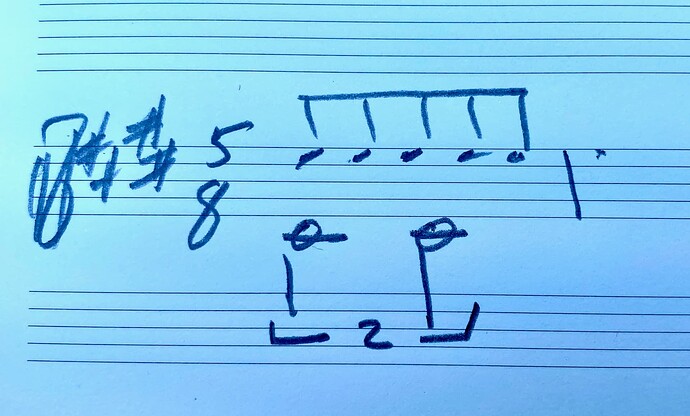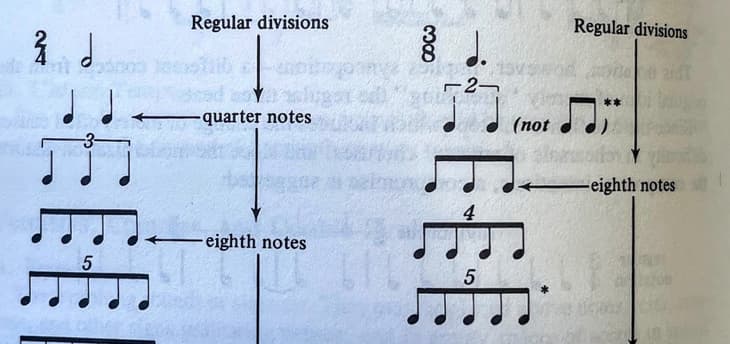Hi folks!
Actually, this shouldn’t be all that fiendish. But this one has me stumped, and I’m hoping the Dorico brain trust can offer guidance.
I’m trying to write two-against-five rhythms in 5/8. I always think of the tuplets sign as compressing a set of notes into a shorter duration, as opposed to stretching them into a longer duration. In other words, the unbracketed sequence of notes should have greater duration than they would after they’re bracketed.
So I’d expect to see this:
But I haven’t persuaded Dorico to duplicate this.
Here’s what I’ve tried so far:
In bar 1, the desired rhythm is accurately conveyed. But I’d prefer a tuplet to the difficult-to-read tie.
At bar 10, I entered two half-notes, as shown. Next I selected them and entered a tuplet value of 2:5. The unwanted result appears in bar 20.
Next, at bar 30, I tried entering two quarter notes, selected them, and entered 2:5. The unwanted result appears at bar 41.
Finally at bar 48 I tried entering two eighth-notes. I selected them, typed in 2:5, and got the arrangement seen at bar 56. When played back, the sound is correct, but stretching two eighth-notes out to the length of five eighth-notes looks so very, very wrong.
If you’ve read this far, thanks! And if you have a suggestion about how to achieve the desired appearance, well, thanks ten times over. ![]()










